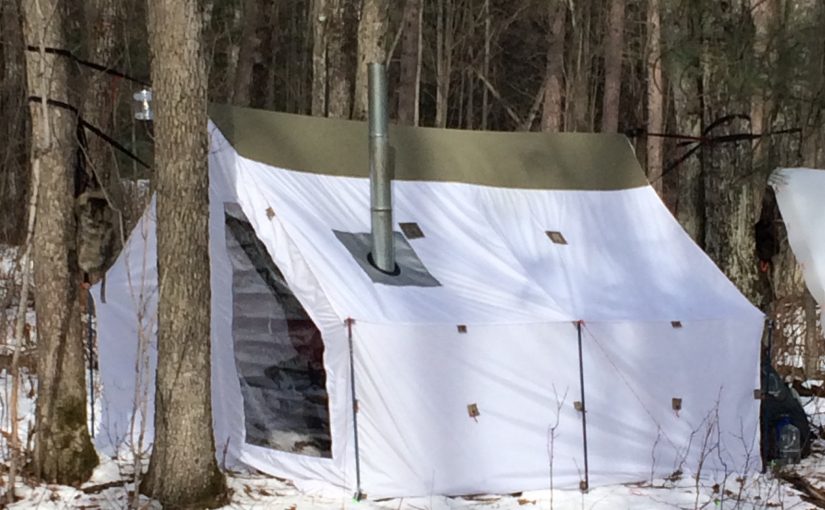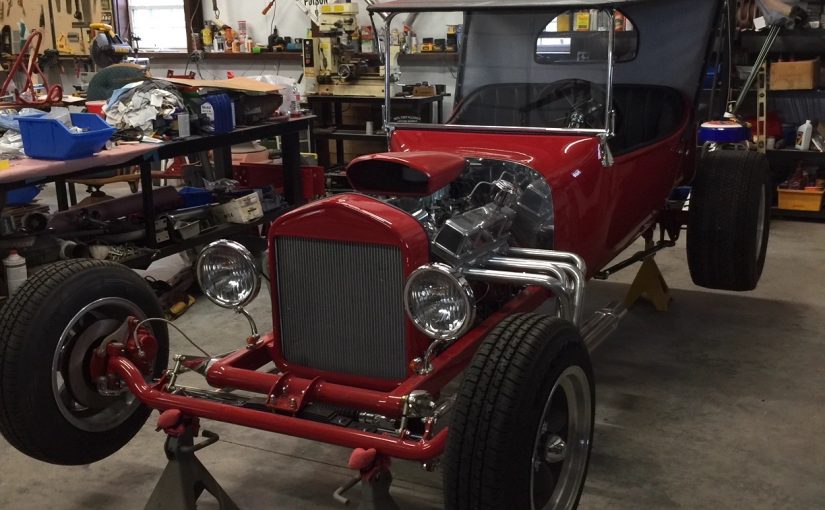Mark Carter is not your typical Sailrite® customer. He doesn’t sew for his boat or RV, and he doesn’t do any home sewing or upholstery work. Instead, his hobby is a bit more … cold. He enjoys winter tent camping with his family in the upper Midwest United States. Winter camping might sound bitterly unpleasant, but Mark has found a way — with a little ingenuity and a can-do DIY spirit — to turn this frigid hobby into a pleasant activity for him and his family.
Mark and his family began winter camping around 10 years ago. They connected with other winter campers from online camping forums, including HammockForums, Bushcraft USA and WinterTrekking.com — plus camping groups on Facebook — and found a community of like-minded outdoor enthusiasts. They soon began winter camping together as one big group. There’s a camp going on almost every week throughout the year among the woodsy friends in these online groups. Mark and his family join in as often as they can.
“Most camps last three to five days, but I’ve done up to two weeks in Canada,” he recounted.

“People from all over the United States and Canada meet up in places like the Huron-Manistee National Forests [extending across the northern lower peninsula of Michigan],” said Mark. “The camps can last for three days up to a week with campers staying however long they can.”
The Carters camp year-round, mostly in the Midwest and Canada. Although his sons are grown now, they still enjoy spending quality time outdoors with their father and other family members. Winter camping is a bit of a tradition for the Carter Clan. “My son Carl and his wife, Jessica, my son Corey, my brother James and a few cousins camp with me,” Mark stated.

Through his winter camping hobby, Mark realized there was a void in the camping gear and equipment industry for hammock tents. So what does any self-reliant, determined hobbyist do? He made his own, of course! Mark first learned to sew practicing on his mom’s old Singer, repairing his camping gear. He later purchased a used Singer that he uses to sew his tents and hammocks.
Mark was inspired to sew his own hammock hot tent after watching a YouTube video his friend, and fellow winter camper, Tom Brown had posted. The video featured a tour of Tom’s handmade hammock hot tent as he explained how he’d constructed and sewn it. In the video, Tom mentioned using double-sided Seamstick Basting Tape on the tent’s seams, and that’s how Mark first learned about Sailrite.
Why sew a DIY hammock hot tent instead of buying one? “No one makes them commercially to the specifications I’m looking for,” Mark explained. “Sewing allows me to make the things I dream up a reality. I can make them the way I want them to look — a tent that weighs 4 lbs. that lets you sleep in a hammock and stays heated with a small wood stove. By sewing the tent myself, I can save money and build a tent with quality materials.”
Mark has sewn two tents so far, as well as hammocks. His first tent was based on a wall tent, also known as a safari tent, and sleeps three. With more experience under his sewing belt, he kicked his design skills up a notch for his next tent. “My second tent was based on a Dogger TZ Brown design. I modified it for additional height and simplified it for easier construction and faster set up.”

When designing and constructing a tent, Mark always begins with a paper drawing. He scales it down and decides how he wants it to look and the features he needs. He then figures out the dimensions and measurements. Next he plots out a full-size pattern on the floor in his home using painter’s tape to map out the pieces. After that, he marks and cuts the fabric to match the taped pattern on the floor.
Next come the sewing and construction process. Mark uses Sailrite basting tape to sew the slippery silpoly tent panels together. “Silpoly is very slippery fabric to sew and you want to avoid using pins through the fabric as it can create work waterproofing all those extra holes. After I assemble the tent, I set it up to evaluate how I did and look for ways to make it better the next time.”
In addition to basting tape, Mark also orders the other materials for his tents and hammocks from Sailrite, basically everything but the fabric. “I started buying supplies from Sailrite after watching Tom Brown’s YouTube video. I order #10 Vislon zippers, 1-inch webbing, binding and vinyl window material. Hammock campers are DIY types, and Sailrite is well-known in the community.”

Altogether Mark’s tent weighs about 5 lbs. It’s heated with a small wood burning stove with an opening in the roof that fits the pipe for the smoke to escape. He can cook food protected from the elements and he can dry his clothes and gear in the comfort of his tent. Plus, sleeping in a hammock means he’s protected from the cold, hard ground.
Mark loves the tents and hammocks he’s custom made to fit his camping pastime. For him, it’s not just a way to be creative and experience the joy and pride that comes with making something with your hands. Camping is also his family’s way of coming together for good laughs, good fun and a little adventure. And at the end of the day, isn’t that what life’s all about?
“My hammock hot tent lets me travel to remote areas and sleep in comfort,” Mark said. “Winter camping is peaceful. Give it a try!”

Who We Are
Sailrite is your one-stop DIY shop! We are a passionate crew of do-it-yourselfers who strive to equip you with the supplies and how-to knowledge you need to tackle your next project. Do you want to learn upholstery, leatherwork, canvaswork, hobby sewing, bag making or more? We have the fabric, tools, hardware, sewing machines and notions you need to master any DIY. And even if you’ve never sewn before, our tutorials and how-to videos are designed for beginners and experienced crafters alike.
Start your DIY journey today: www.sailrite.com




